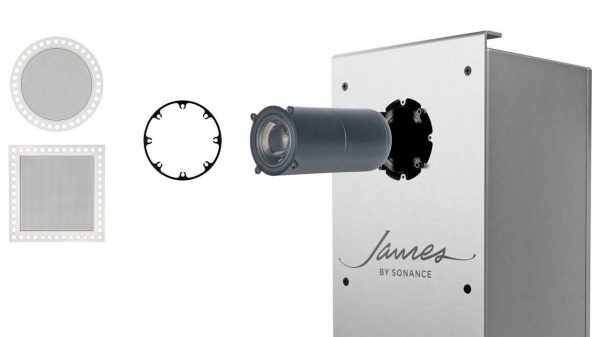AMIMON Demonstrates Revolutionary Technology for Wireless Transmission of Uncompressed HDTV at CES
Wireless Video-Aware Modem Features WHDI for Access to all Video Sources with Video Rates of up to 1.5Gbps
SANTA CLARA, CALIF. — December 12, 2005 — AMIMON Inc., an emerging leader in semiconductor technology for wireless transmission of high-definition (HD) video, today announced it will demonstrate its revolutionary uncompressed high-definition video technology at the Consumer Electronics Show held in Las Vegas January 5-8, 2006. AMIMON’s solution delivers wireless uncompressed HD video streams with quality equivalent to that achieved with wired interfaces, such as HDMI.
AMIMON’s WHDI (Wireless High-Definition Interface) semiconductor technology will be implemented in an innovative wireless video-aware modem chip, the first of its kind, wirelessly transmitting high-definition video streams provided through uncompressed HD video interfaces such as DVI, HDMI or component video. With this technology, HD flat-panel televisions and multimedia projectors can interface to all high-definition video sources via a high-quality wireless link, eliminating the need for cumbersome and messy wires. Initial consumer product implementations are anticipated in the second half of 2006.
“Providing wireless transmission of uncompressed HDTV is a crucial step toward achieving the universal connectivity required to make the wireless digital living room a reality,” said Dr. Yoav Nissan-Cohen, CEO of AMIMON, Inc. “We have just completed two weeks of demonstrations to top television and projector manufacturers in Japan and Korea. They have applauded AMIMON’s uncompressed wireless technology which will allow them to provide wireless connectivity to interface with all consumer video products, legacy and new, with uncompromised quality. No other technology can deliver this high-quality performance.”
Several technologies are under development to deliver compressed HD video, including Ultra Wideband (UWB) and IEEE 802.11n. However, compressed video streams such as MPEG are typically not provided at the output of most consumer video devices such as DVD players, set-top boxes and gaming consoles. Adding re-compression hardware to UWB or 802.11x solutions increases cost, adds delay and degrades the quality of the video, a significant disadvantage for high-end HDTV displays.
Unlike other technologies, AMIMON’s WHDI eliminates the need for additional compression/decompression components. Moreover, with latency of less than one millisecond, AMIMON’s WHDI ensures the same user experience as consumers have come to expect from wired HDTV. For the first time, wireless transmission of uncompressed HD video can be provided with quality equivalent to that currently delivered through an HD wire.
This patent-pending technology enables wireless delivery of the original HD video including 720p and 1080i with video data rates of up to 1.5 Gbps. Operating in the 5 GHz, unlicensed frequency band and utilizing the benefits of MIMO technology AMIMON adds proprietary optimization to address the unique requirements of video delivery, making it the first modem specifically optimized for video transmission.
For more information about the demonstration of AMIMON’s technology, or to make an appointment at CES, email info@amimon.com or visit: www.amimon.com/ces.
About AMIMON
AMIMON is a fabless semiconductor company pioneering wireless uncompressed high-definition video for universal connectivity among CE video devices. AMIMON’s uncompressed Wireless High-Definition Interface (WHDI) allows flat-panel televisions and multimedia projectors to wirelessly interface to all HDTV video sources at a quality equivalent to that achieved with wired interfaces such as component video, DVI and HDMI.
The Company is headquartered in Herzlia, Israel with offices in Santa Clara, Calif. USA, and is funded by Cedar Fund, Walden Israel Venture Capital and Evergreen Partners. More information is available at www.amimon.com.
# # #
WHDI is a trademark of AMIMON, Ltd. All other trademarks and registered trademarks are those of their respective holders.























